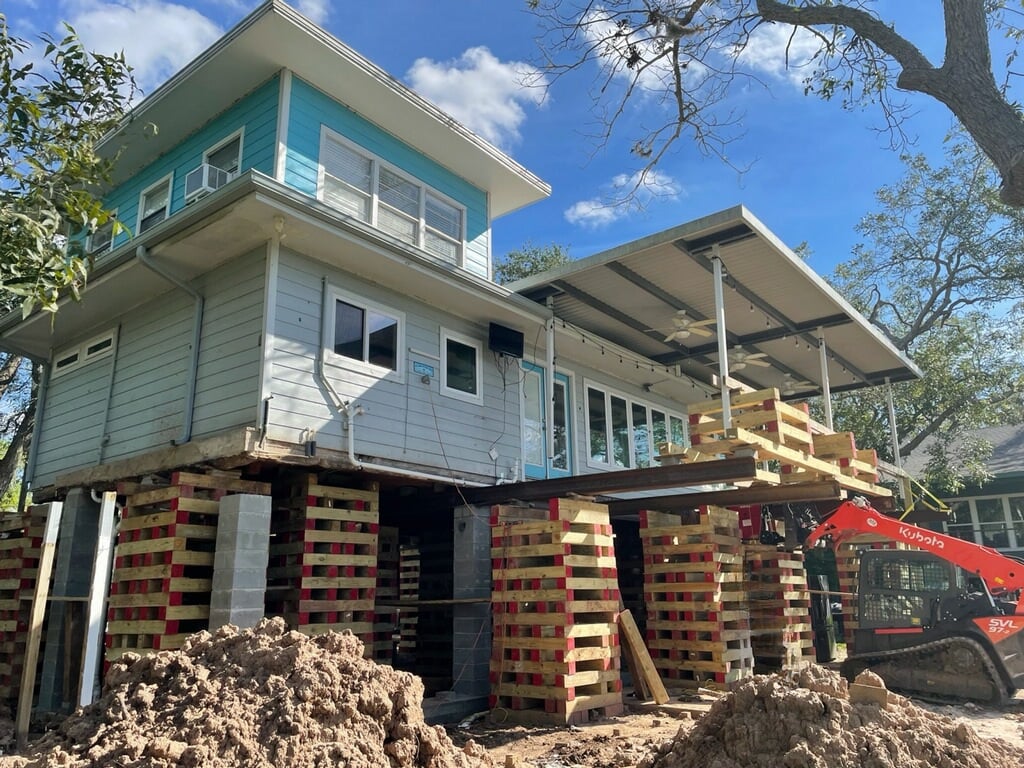Home elevations are complex projects that require careful planning and preparation. While not the most enjoyable component of an elevation project, preparation plays an essential role in ensuring that everything goes smoothly, without delays and additional costs. To help, we’ve created a guide that outlines the basic steps you should follow when preparing your home for elevation.
First Things First: Hire the Right Contractor
Most home elevation projects are complex jobs that require a lot of expertise and specialized equipment. To ensure your home is raised properly above the BFE and remains safe for living after it’s lifted, we cannot emphasize enough the importance of hiring a team of experienced professionals, who are familiar with the applicable retrofit/construction-related laws and regulations. According to FEMA, for example, all home elevation projects must meet the current community floodplain management ordinances. So, whether you’re rebuilding or just lifting your home, the contractor you intend to hire must be aware of the recent improvements in construction practices and regulations in order to ensure that your home will meet the latest building code. Once you hire the right contractor, you can focus on preparing for home elevation.
Preparing the Inside of Your Home for Home Elevation
When preparing your home for elevation, the good news is that you don’t have to remove too many things from your home. Elevation is a slow, smooth process, which typically involves lifting a home no more than several inches per day. Therefore, it’s highly unlikely that your things will get damaged. However, if you have any fragile or unsteady items, it’s better to pack them up and store them away from the work area.
Additionally, it’s essential to know that specific activities, such as extending existing walls, building a new foundation, or adding a second story to your home, will generate a lot of construction dust. To prevent dust from accumulating on different surfaces, a great idea would be to cover your furniture and different items with thick tarps or plastic sheets and pack up your carpets, rugs, and curtains. In case that you need to remove the ductwork prior to the lift, sealing off all your vents is another important step. With the ductwork disconnected, dust might make its way into your home through the vents.
Preparing the Outside of Your Home
As part of your home elevation project, you need to complete a series of tasks outside your home, such as:
- Cleaning out the crawlspace – In order to speed up the entire process, a good idea would be to remove all the items stored in your crawlspace ahead of time, so the workers will have a clear space to work. When cleaning out the crawlspace, make sure that you also remove any exposed pipes, wires, and/or ductwork that hang below the floor joists. If there are any pipes or wires that shouldn’t or cannot be removed, try to fasten them securely to the joists and frame.
- Removing specific components – While some Houston homes can be elevated together with their porches or decks, others need to have their porches or decks removed. It’s essential to consult with the contractor, who can recommend the best solution for your property, depending on your home design. As well, because the steps won’t fit the new elevation, you could just remove them or add more steps once your home is lifted.
- Clearing the perimeter around your home – Any fences, pavers, sidewalks, flowerbeds, plants, shrubs, or trees located too close to your home should also be removed for clear access. If there are any trees, shrubs, or plants that are valuable to you and cannot be moved to another location, mark them with flagging tape, so the workers know to work around them.
- Marking and disconnecting utilities – Striking utility lines, like underground gas or electric lines and water/drain pipes, can cause serious damage and even injury. The best way to prevent accidental damage to utility installations is to mark them with paint or flags. Also, you need to make sure that your telephone, internet, water and drain pipes, power and gas lines, and anything else coming to your home through a pipe or wire is disconnected and/or turned off before the elevation can begin.
Getting Financial Assistance for Home Elevation
If you live in a Special Flood Hazard Area (SFHA) and have a flood insurance policy from the National Flood Insurance Program, you may be eligible for Increased Cost of Compliance coverage if your home has sustained substantial flood-related damage. This type of coverage provides additional financial assistance for those who need to rebuild or elevate their homes after a flood.
Undoubtedly, elevating your home is not a walk in the park. But when you hire the right contractor with the experience and equipment to do the job right the first time, it’s one of the best investments you can make. Besides protecting your belongings and keeping your family safe, lifting your home allows you to add more livable space and increase the value of your property. To find out more about the home elevation process or to request a free consultation and estimate, please call our experienced professionals at 281-584-6943!

